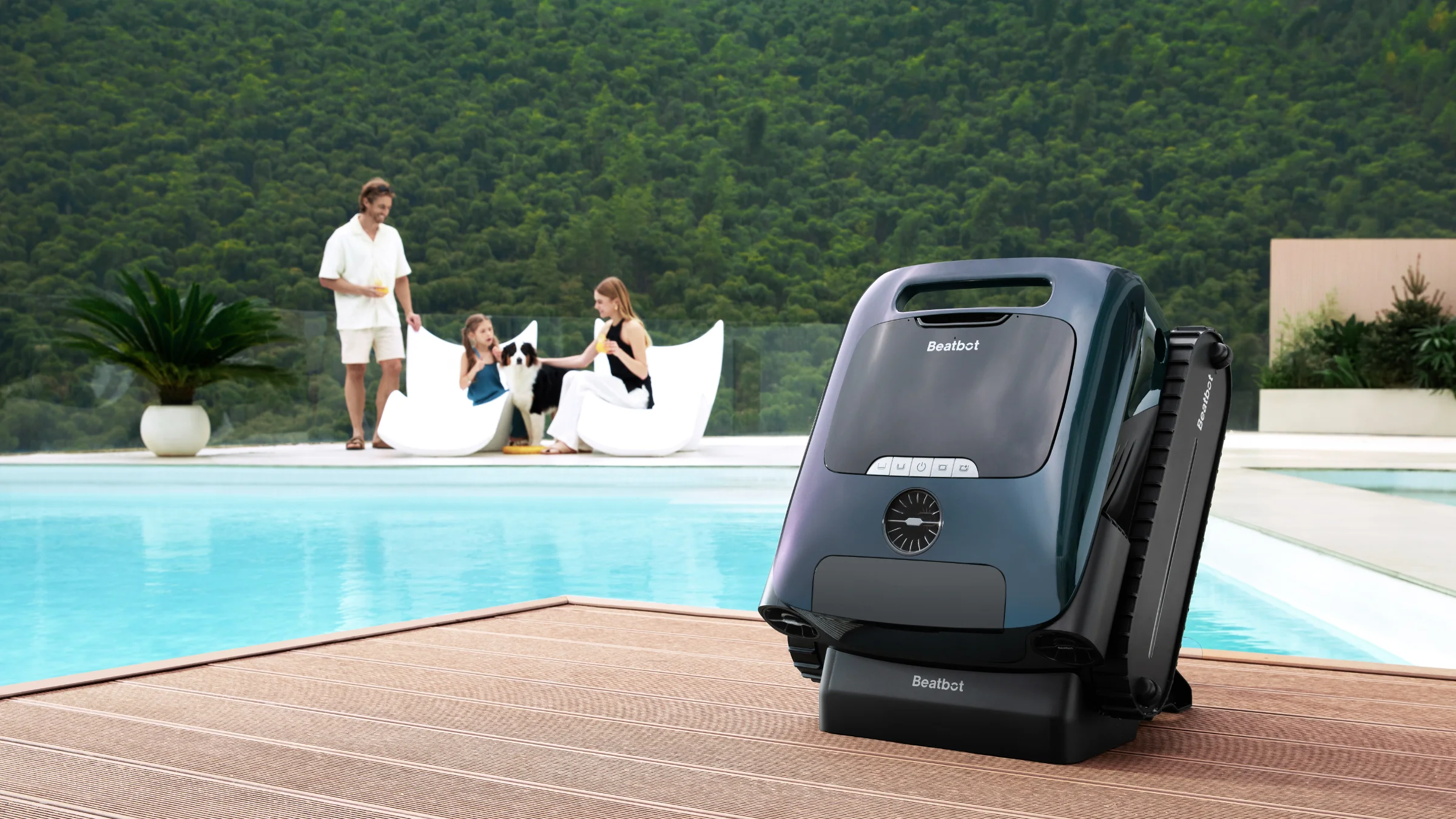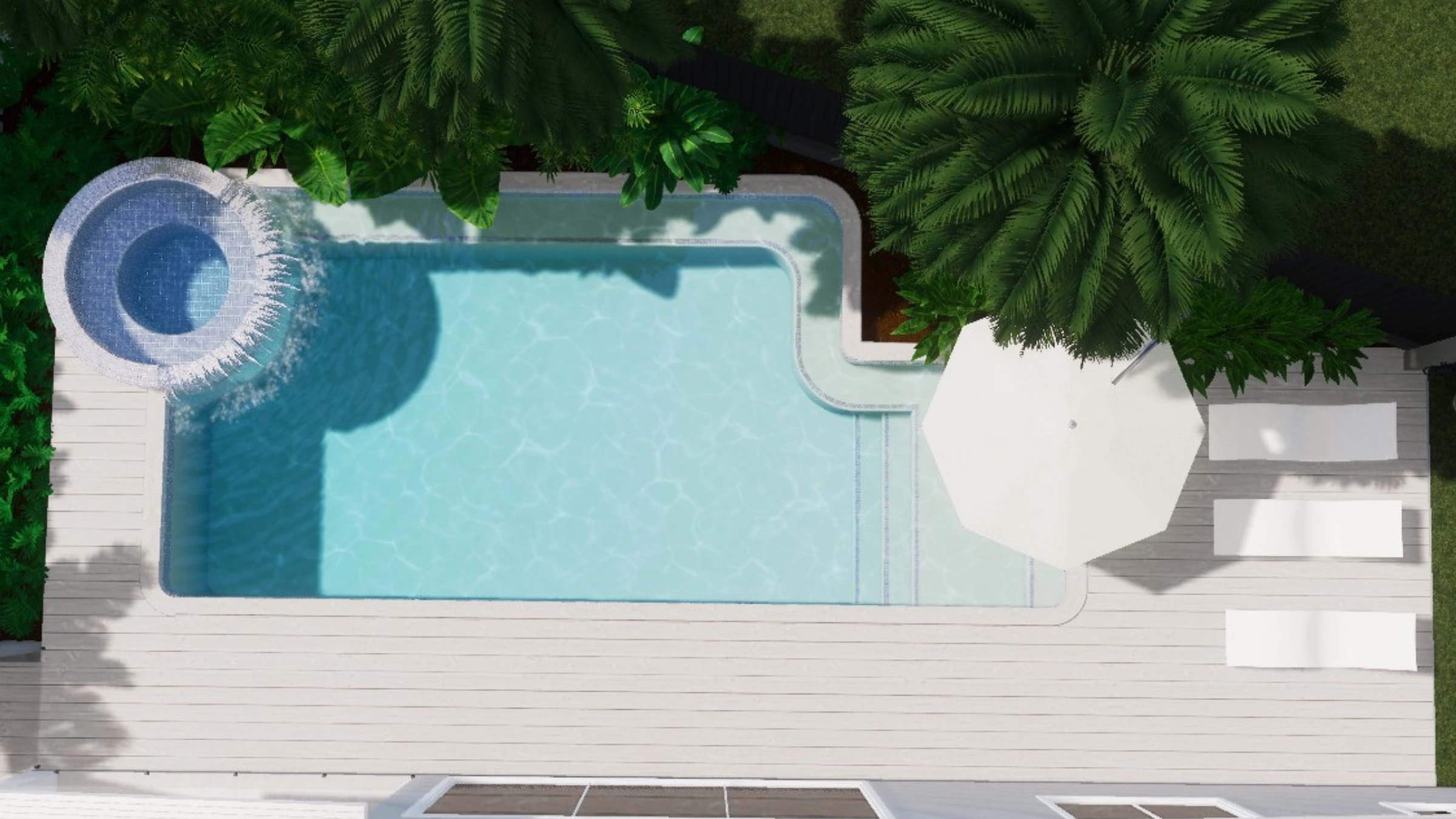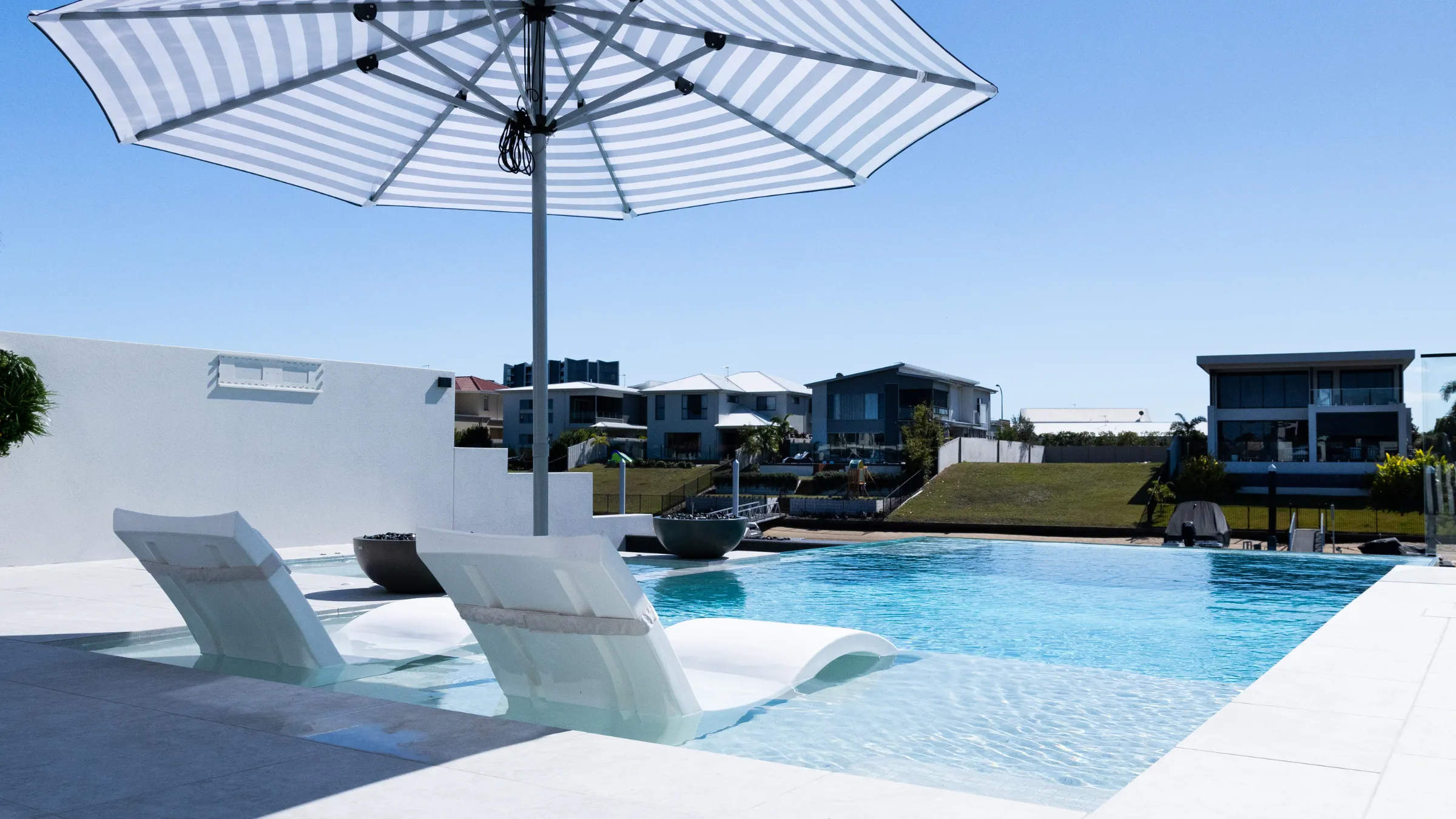What causes pool water to turn green?
A green pool is usually the result of an algae bloom. Algae are single-celled organisms that thrive in warm, moist environments. They can reproduce quickly when conditions are right, leading to a green pool. Several things can cause algae blooms, including:
1. Algae
Pools are often green because of algae growth or an algae outbreak. Algae is a plant-like organism that grows in water and produces oxygen through photosynthesis. While algae are not necessarily harmful, they can cause problems in pools, including discolouration and odour.
Several things can contribute to algae growth in pool water, including sunlight, warm water, and high levels of nutrients.
2. Minerals and metals
Another possible cause is the presence of minerals and metals. This can often happen if the pool water has been sitting for an extended time, as these substances can build up over time. Minerals and metals can include copper, iron, and calcium.
3. Bacteria
Bacteria can also cause green pools. This is often the case with swimming pools that are not properly maintained and have not been adequately cleaned or chlorinated. Bacterial growth can lead to green or cloudy water and an unpleasant odour.
5. pH levels
An imbalance in pH levels can also cause green pools. According to SPASA (Australian Swimming Pool and Spa Association), the ideal pool water pH level is between 7.2 and 7.8, so if the water is too acidic or alkaline, it can lead to green discolouration.
An acidic swimming pool has a pH level of less than 7.2, whereas an alkaline pool has a pH level greater than 7.8.
Acidic water can be caused by rainwater and other contaminants entering the pool, while the overuse of chlorine or other pool chemicals can cause too much alkalinity.
6. Improper chlorine levels
The chlorine levels in your pool prevent it from turning green. If the chlorine level is too low, algae can grow and multiply. If chlorine is too high, it can cause skin irritation and other health problems. Proper chlorine levels should be between 1.5 and 3 ppm.
7. Inadequate circulation
Inadequate circulation is one of the most common causes of pool algae growth. If your pool doesn't have enough circulation, the water will become stagnant and unable to filter the chlorine properly. This will cause the chlorine to break down, and the water will become green.
8. Debris in the water
Debris, such as leaves and other organic floating matter, can cause green pools. This is because the waste will decompose in the water and release nutrients that can feed algae growth. This debris can also sink into the pool floor if not removed.
9. Improper pool maintenance
Finally, improper pool maintenance can also start an algae outbreak. This includes not cleaning the pool floor, wall, and the surrounding area or changing the water regularly. Testing the water and adjusting the pH levels as needed is also essential.
10. Sun exposure
Harmful UV rays from the sun can also cause green pools. The UV rays will break down the chemicals used to keep your pool clean and healthy, allowing algae to grow and spread.
How to fix a green pool?
1. Check pH levels
The pH level is one of the first things you should check if your pool is turning green. If the pH levels are too high or too low, it can cause algae to grow. You can check the pH levels with a pool pH testing kit.
You will need to adjust if they are not in the correct range. Maintain a pH between 7 and 7.6 to avoid any health risks.
A water pH above eight can cause skin rashes, while a pH below seven can sting the eyes.
2. Clean the pool
Cleaning your green pool is essential to get rid of any algae floating or debris that may be contributing to discolouration. Use a brush, vacuum, and skimmer to remove any stubborn dirt or debris from the pool walls and floors. Then use a chlorine shock treatment to kill any remaining algae.
3. Chlorine shock treatment
A chlorine shock treatment is a strong dose of chlorine to kill off any remaining dead algae or bacteria in the green pool. It would be best if you used it after cleaning the pool.
Make sure to follow the instructions on the package carefully and use protective gear when handling chemicals. Check chlorine levels frequently.
4. Clean the pool filter
If your pool's filtration system is not clean, it can also lead to algae growth. Make sure to clean your filter regularly and replace the filter media when needed.
Professionals suggest cleaning your cartridge filters every three months to avoid green pool water.
Filter replacement is between one and four years, depending on the type of filtration system. Do regular checks to see if your filter is performing optimally.
5. Increase circulation
If your green pool is caused by poor circulation, increasing the circulation can help improve the clarity of the water and prevent pool algae buildup. Adding a pump or adjusting equipment increases the speed and pool water flow.
Additionally, you can check that all the skimmers and drains are clear of any dead algae or debris.
6. Balance pool chemicals
It is essential to balance pool water chemicals regularly. If the chemicals are not in balance, it can create an environment where algae can thrive. You can use a swimming pool chemical kit to test and adjust chlorine, pH, and alkalinity levels. Swimming pool chemical kits are available at any local pool store and can cost between $10 and $30.
7. Add algaecide
If you have an algae problem, you can treat it with an algaecide. Many algaecides are available, so choose one compatible with your pool's chemistry. There are three types of algaecide:
- Quaternary - for light green algae and mustard algae.
- Copper-based for dark green and black algae.
- Polyquat - for green and some types of pink algae.
These chemicals disrupt energy transport, cell division, or cell membranes, making the algae more vulnerable to sanitisers such as chlorine. Each type of algaecide differs in how effective it is and how much algae it can kill. Read the instructions carefully to ensure you use the algaecide correctly and in the appropriate dosage.
Tips to prevent a green pool
1. Keep the pool clean and free of debris
One of the best ways to prevent algae growth is to keep your pool clean and debris-free. Make sure to skim leaves and other debris from the water's surface regularly and vacuum the bottom of the pool at least once a week.
2. Test the water regularly
To prevent algae pools in the future, test the water regularly and adjust any levels (pH, chlorine, etc.) as needed. Professionals recommend trying your pool at least twice weekly to ensure it is safe and clean.
3. Use a pool cover
One of the best ways to prevent algae pools is to use a pool cover. Pool covers stop leaves and other debris from getting into the water, which can lead to algae growth.
They also help keep the water temperature consistent, especially during hot weather, which can slow down algae growth. The best pool cover materials are vinyl and solid.
4. Check your filter regularly
Make sure to check your cartridge filter periodically and clean it when needed. A dirty or clogged filter can reduce circulation, leading to green pool water. Always check if your filters are completely clear of any gunk.
5. Stay on top of maintenance
Regularly cleaning your pool, removing debris, and maintaining proper chemical levels will help keep green pools at bay. Following these steps can help ensure that your pool is clean and safe for swimming in no time. If you still have trouble getting the green out of your pool, it might be time to call in a professional. They can help diagnose the underlying cause of your green pool and suggest the best way to fix it
Conclusion
Following our guide, you can return your pool water to its original state in no time. Plus, we've also provided some tips on how to prevent your pool from turning green in the first place. If you need any further assistance, Poolz is here to help! We are the authority in connecting pool owners to pool businesses in Australia and would be more than happy to put you in touch with one of our trusted partners.
Keep your inground swimming pool looking perfect all year round by making sure you understand all the maintenance and care steps required.
Growing up in Wollongong, NSW, in the 80’s, all the cool kids had pools. I, unfortunately, was not a cool kid, so I spent the summers overstaying my welcome at my neighbours with pools. That was the start of my passion for pools, and it has grown ever since. Nothing instantly relaxes my soul like being in water and not many things make me feel better than diving into a pool that is slightly too cold on a sweaty day.
During my 25 years in the pool industry, I have sold spas, swim spas, above ground pools and fibreglass pools. I always dreamed of designing luxury concrete pools and landscapes, with my lack of drawing ability being the only hiccup until I discovered 3D design about 10 years go. Since that day, I have been extremely proud of designing and seeing to completion many swimming pools that have received industry awards, and more importantly, that my clients have loved. Helping people achieve my childhood dream (and often theirs too!) is an exciting and rewarding privilege.
Designing swimming pools has been the perfect job for me. Every day is different. I love listening to what my clients say, and don’t say, so that I can pick up on all the clues needed to successfully blend form with function and make my designs match their home, life, aspirations, lifestyle, and personality. It’s problem solving in a beautifully delicate creative way which allows me to see stunning homes and amazing suburbs that I might have never otherwise seen, and to work with the loveliest clients who put considerable trust and belief in me by inviting me into their homes, and lives.
The last 10 years has seen many exciting design and technological advances in the swimming pool industry. 3D design has evolved to virtual and augmented reality, pool automation has changed the way we own and care for our pools, and Poolz has revolutionised the way homeowners connect with their ideal pool builder and inform themselves about buying and owning a pool.My role at Poolz now enables me to put all my industry experience to use by helping pool builders and homeowners in a fresh and exciting way, but when I’m not helping make dream pools a reality, you’ll find me bingeing on Netflix (who isn’t?!), watching the mighty Brisbane Lions, or escaping in my 4WD and rooftop tent to enjoy a campfire with family and friends.















